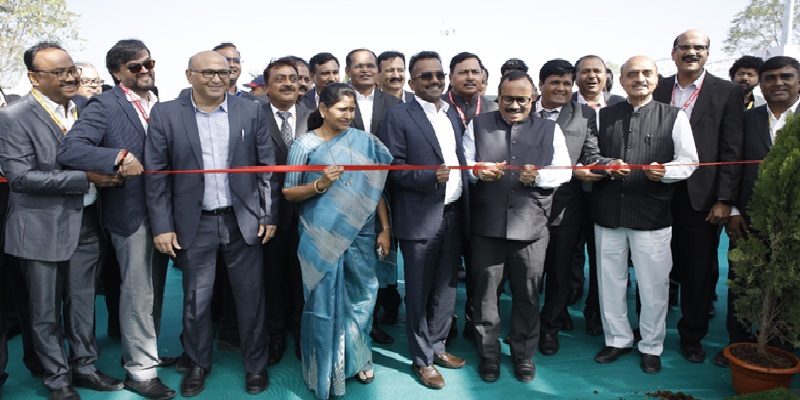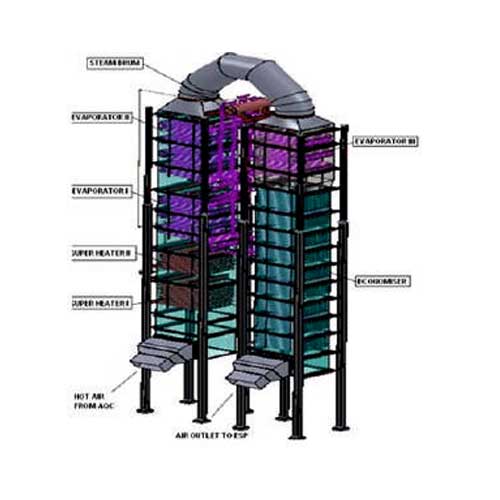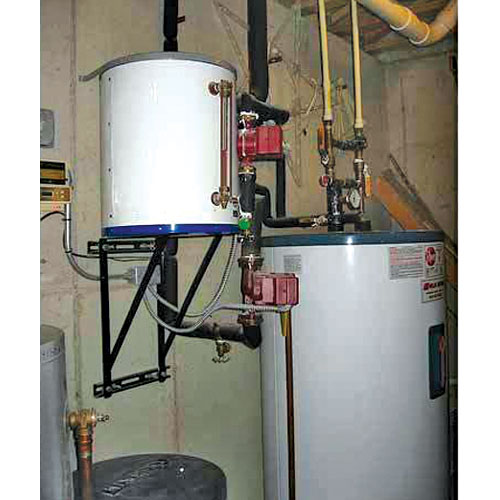Schedule a Call Back
Using waterways to reduce manufacturers’ carbon footprint
 Articles
Articles- May 28,24

In the race for efficiency and profitability, Indian manufacturers face mounting pressure to navigate the delicate balance between economic viability and environmental impact. As consumer demand for sustainability grows and regulations tighten, the imperative for eco-conscious practices becomes increasingly urgent. But how can manufacturers strike a balance between cost-effectiveness and environmental responsibility? Fortunately, an often-overlooked ally stands ready to aid in this quest – India's expansive network of waterways.
Embracing waterways can lead to significant cost savings for businesses across their supply chain, while simultaneously reducing their carbon footprint and aligning their business with India's ambitious sustainability goals. By leveraging this underutilised resource, manufacturers can achieve a win-win – boosting their bottom line and contributing to a cleaner future.
Unlocking the waterways
Traditionally, water routes have served as lifelines of global trade, yet their significance has waned in the era of high-speed transport. However, for bulk cargo travelling lengthy distances, water transport emerges as a cost-effective solution.
Seafaring vessels, with their massive cargo capacities exceeding 2,000 metric tons, boast operational costs as low as ?1.06 per metric ton per kilometre (MT-km), significantly undercutting alternative modes of transport.
Comparatively, roadways come to ?2 per MT-km and rail transport comes to ?1.41 per MT-km. While vital, the transports prove less economical for bulk cargo movement over extended distances. This cost disparity underscores the pivotal role waterways can play in optimising supply chain economics for industries spanning steel, coal, automobiles, and agriculture.
Championing sustainability
Beyond economic efficiency, water transport offers compelling environmental and social benefits, aligning with Environmental, Social, and Governance (ESG) imperatives. Some of the advantages are:
Reduced Air Pollution: Water transport generates a mere fraction of the air and noise pollution attributed to road transport. With a nominal emissions rate of 0.03 units per MT-km, waterways offer a seven-fold reduction in harmful pollutants, fostering cleaner air and quieter surroundings for communities.
Minimal Noise Pollution: Heavy vehicles on roads are major contributors to noise pollution, disrupting communities and impacting wildlife. Waterways boast a near-zero noise pollution rating, creating a quieter environment for communities residing near transportation corridors. This is particularly beneficial for sensitive ecosystems and wildlife habitats that can be disturbed by excessive noise.
Lower Land Use Impact: Unlike road and rail infrastructure, which necessitate extensive land acquisition and ecosystem disruption, waterways capitalise on existing natural resources, minimising soil and water pollution. This sustainable approach to development ensures environmental preservation, particularly in ecologically sensitive areas.
Enhanced Safety: The near-zero accident rates, make water transport a safe and reliable cargo movement option. Moreover, investing in inland water transport infrastructure fosters regional economic development, creating employment opportunities and driving balanced growth along riverbanks and canals.
Promoting Inland Development: Developing a robust inland water transport system can boost economic development of regions along rivers and canals. This fosters balanced regional growth and creates employment opportunities in these areas.
Seizing opportunities
The steel industry, with its extensive presence in Eastern India encompassing major plants in Bokaro, Jamshedpur, Durgapur, Rourkela, Kalinganagar, Dhankanal, and Angul, stands uniquely positioned to capitalise on the advantages offered by waterways. Fortunately, this region is complemented by a well-established network of national waterways including NW-1, NW-2, NW-86, NW-16, NW-97, NW-37, and NW-58.
The utilisation of waterways presents a gateway to untapped market opportunities for the steel industry, particularly in meeting the demand for steel in the Northeast region, estimated at approximately 1.5 million metric tons per annum (MMPTA). Additionally, East coast ports such as Gangavaram (RINL), Paradeep, and Dhamra offer access to export markets via the Indo-Bangladesh Protocol Route.
By embracing a hub-and-spoke model, wherein waterways serve as the primary mode for bulk movement of steel, complemented by existing road and rail networks for last-mile delivery, the steel industry can realise significant cost savings and environmental benefits. This collaborative approach optimises transportation efficiency by leveraging the strengths of each mode; waterways for cost-effective long-distance bulk transportation, roadways for flexibility in last-mile delivery and reaching remote locations, and railways for efficient medium-distance bulk transportation.
Through this method, the steel supply chain can substantially reduce its overall carbon footprint while ensuring the timely and cost-effective delivery of steel products.
Course for collaboration
The government holds a pivotal position in fostering the utilisation of waterways by undertaking several strategic initiatives.
Firstly, investing in infrastructure development and modernisation of waterways is imperative to enhance their efficiency and capacity. Streamlining regulations and promoting digitalisation can optimise cargo movement, ensuring seamless operations along water routes. Providing incentives such as tax breaks and subsidies for cargo movement through waterways can incentivise manufacturers and logistics companies to leverage this mode of transportation. Facilitating Public-Private Partnerships (PPPs) can also attract private sector investment, further boosting the development of inland water transport infrastructure.
Simultaneously, industry bodies and associations have a crucial role to play in promoting the adoption of waterways as a viable transportation option. They can start by creating awareness among manufacturers about the myriad benefits of waterways, highlighting their cost-effectiveness and environmental advantages. Additionally, facilitating knowledge sharing and best practices can empower businesses to integrate waterways into their supply chain strategies effectively. Collaborating with the government on policy advocacy initiatives can ensure that the regulatory framework supports and encourages the growth of inland water transport, fostering a productive environment for its development and expansion.
Conclusion
By embracing water transport as a cornerstone of their logistics strategy, Indian manufacturers can chart a course towards sustainable growth. This holistic approach not only drives economic prosperity but also reaffirms India's commitment to environmental responsibility on the global stage. Through embracing a sustainable and cost-effective approach to logistics, India can position itself as a global leader in responsible manufacturing and pave the way for a greener future.
About the author-
Partha S Dash is the Managing Director for Moglix, bringing over 15 years of dynamic experience in sales and marketing to the table. A keen focus set on emerging markets, Partha has a proven track record of shaping businesses through strategic brand building initiatives and establishing efficient distribution networks. His diverse background spans across various industries including foods, telecom, and steel, making him well-equipped to tackle market development challenges head-on.
Related Stories

TARIL Reports 32% YoY Revenue Growth, Q3 PAT Rises 37%
Transformers & Rectifiers (India) Limited posts strong Q3 FY26 results, driven by higher revenues, improved margins, healthy order inflows and leadership continuity.
Read more
Toyota Kirloskar Motor Showcases Flex-fuel Hybrid Tech
Toyota Kirloskar Motor highlights flex-fuel strong hybrid technology, skilling initiatives and industry collaboration at the Advantage Maharashtra Expo 2026 in Chhatrapati Sambhajinagar.
Read more
German Chancellor Friedrich Merz Visits Bosch India Campus in Bengaluru
German Chancellor Friedrich Merz visited Bosch’s Bengaluru campus, highlighting India–Germany collaboration in innovation, hydrogen mobility and advanced manufacturing.
Read moreRelated Products

Waste Heat Recovery Boilers
Sitson India Pvt Ltd offers a wide range of waste heat recovery boilers.

Reinforced Water Activated Paper Tape
Mexim Adhesive Tapes Pvt Ltd offers a wide range of reinforced water activated paper tape.

Hot Water System
Haadi Enterprises offers a wide range of hot water system, solar. Read more













